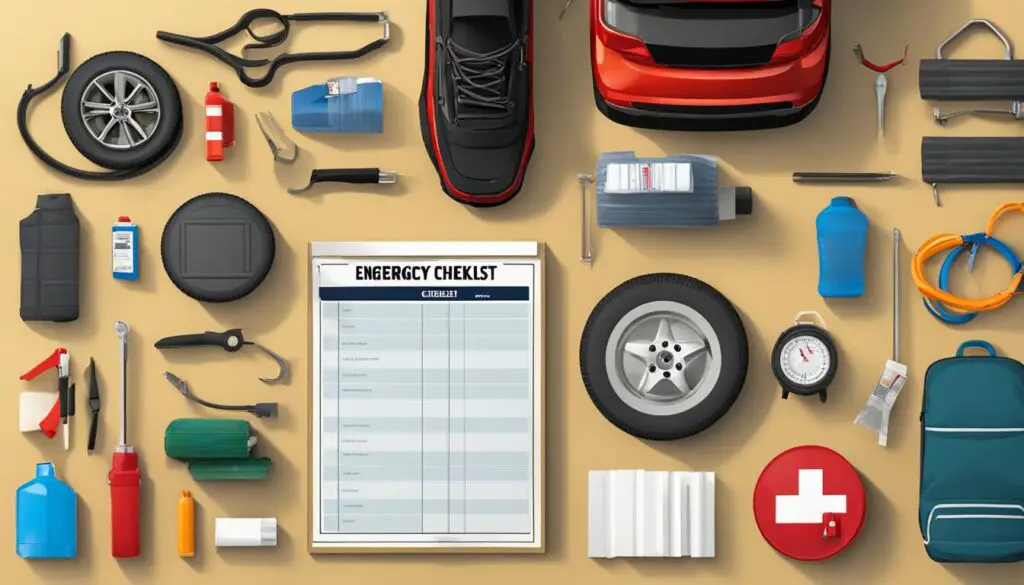
How to Handle Car Emergencies: A Practical Guide
As a driver, encountering car emergencies is almost inevitable. Car breakdowns, traffic accidents, and other unexpected situations can occur when you least expect them. Being prepared and equipped with the right knowledge and strategies is key to handling car emergencies effectively and ensuring your safety on the road.
In this guide, I will provide you with a comprehensive handling car emergencies guide. I will cover different car emergency situations and offer tips on how to seek car breakdown assistance. Additionally, I will outline steps to fix common car problems during emergencies and provide a comprehensive roadside assistance guide to help you navigate the process of seeking professional help when needed.
Key Takeaways
- Handling car emergencies requires preparation and knowledge.
- Understanding car emergency situations is crucial for effective handling.
- Knowing how to seek car breakdown assistance can help you get back on the road quickly.
- Creating a vehicle emergency checklist can be a useful tool in handling car emergencies.
- Having a comprehensive roadside assistance guide can help you navigate professional help effectively.
Steps to Fix Car Problems and Roadside Assistance Guide
Emergencies on the road can be a stressful experience, but being prepared can make all the difference. In this section, I will provide you with a step-by-step guide on fixing common car problems during emergencies. Additionally, I will offer a comprehensive roadside assistance guide to help you navigate the process of seeking professional help when needed.
Vehicle Emergency Checklist
Before hitting the road, it’s essential to have a vehicle emergency checklist. This list should include all the necessary items you may need in case of emergencies, such as:
- A spare tire, tire jack, and lug wrench
- Jumper cables and a portable battery charger
- Flashlight, road flares, and a first aid kit
- Extra fluids such as oil and coolant
- Emergency cash and a charged mobile phone
Automotive Emergency Tips
Regardless of how well-prepared you are, emergencies can still happen. Here are some automotive emergency tips to help you safely handle unexpected car issues:
- Stay calm and move your vehicle to a safe location off the road if possible.
- Assess the situation and determine if it’s safe to try and fix the problem yourself.
- If you need to fix the problem, refer to your vehicle owner’s manual or online resources for step-by-step instructions.
- If you’re unable to fix the issue or it’s not safe to do so, call for roadside assistance.
Steps to Fix Car Problems
If you’re comfortable with fixing the problem yourself and have the necessary tools, here are the steps to follow:
- Identify the issue and its location. For example, if your vehicle won’t start, determine if it’s a battery or starter problem.
- Refer to your vehicle owner’s manual or online resources for step-by-step instructions on how to fix the problem.
- Use your emergency kit to gather the necessary tools and supplies.
- Follow the steps outlined and be patient. Rushing the process may lead to further complications.
- Once the issue is resolved, test your vehicle to ensure it’s functioning correctly before getting back on the road.
Roadside Assistance Guide
If you’re unable to fix the issue yourself or it’s not safe to do so, roadside assistance is your best option. Here are the steps to follow:
- Call for assistance and provide your location, the issue you’re experiencing, and any other necessary details.
- Remain in your vehicle with your seatbelt on and hazard lights flashing until help arrives.
- If it’s safe to do so, place road flares or reflective triangles around your vehicle to alert other drivers.
- Once the assistance arrives, follow their instructions and stay alert and aware of your surroundings.
By following these steps and guides, you’ll be better equipped to handle car emergencies and ensure your safety on the road.

Conclusion
Handling car emergencies can be a daunting experience, but with the right knowledge and strategies, you can stay safe on American roads. Throughout this guide, I have provided you with essential tips and steps to handle car breakdowns and emergencies.
Car Trouble Solutions
It is important to be prepared for unexpected car issues. If you experience car trouble, remain calm and take necessary precautions such as pulling over to a safe location and turning on hazard lights. Depending on the severity of the situation, you may be able to fix the problem yourself using the steps outlined in Section 2. However, if the issue requires professional assistance, seek help from a reputable roadside assistance provider.
Emergency Car Repair Tips
In some cases, you may need to make temporary repairs to your car in an emergency situation to ensure your safety. It is important to remember that these repairs are only temporary and should be further inspected by a mechanic as soon as possible. Some emergency car repair tips include replacing a flat tire with a spare, jump-starting a car with a dead battery, and using a temporary tire sealant for a punctured tire.
By following the tips and steps outlined in this guide, you will be equipped to handle car emergencies with confidence. Remember to always prioritize your safety and take necessary precautions when experiencing car trouble on the road.
FAQ
How can I handle a car breakdown situation?
In the event of a car breakdown, the first step is to safely pull over to the side of the road, if possible. Turn on your hazard lights to alert other drivers. If you are unable to fix the problem yourself, contact a roadside assistance service for help.
What do I do if my car runs out of gas?
If your car runs out of gas, try to safely pull over to the side of the road. If you have access to a gas station nearby, you can walk there to purchase a gas canister and fill it up. Alternatively, call a roadside assistance service to bring you a small amount of fuel.
How can I change a flat tire?
To change a flat tire, first, find a safe location to park your car away from traffic. Use a jack to lift the car off the ground, and remove the lug nuts from the flat tire. Replace the flat tire with the spare tire and tighten the lug nuts. Lower the car back down and ensure the lug nuts are securely fastened.
What should I do if my car battery dies?
If your car battery dies, you can jump-start it using jumper cables and another vehicle with a working battery. Connect the positive (+) and negative (-) terminals of both batteries with the appropriate cables. Start the functioning vehicle and wait a few minutes before attempting to start your car. If this doesn’t work, you may need to replace your battery.
How do I handle a car overheating?
If your car overheats, pull over to a safe location immediately. Turn off the engine and allow it to cool down. Do not attempt to open the radiator cap while the engine is hot, as this can cause injury. Once the engine has cooled, check the coolant level and add more if necessary. If the problem persists, seek professional assistance.
